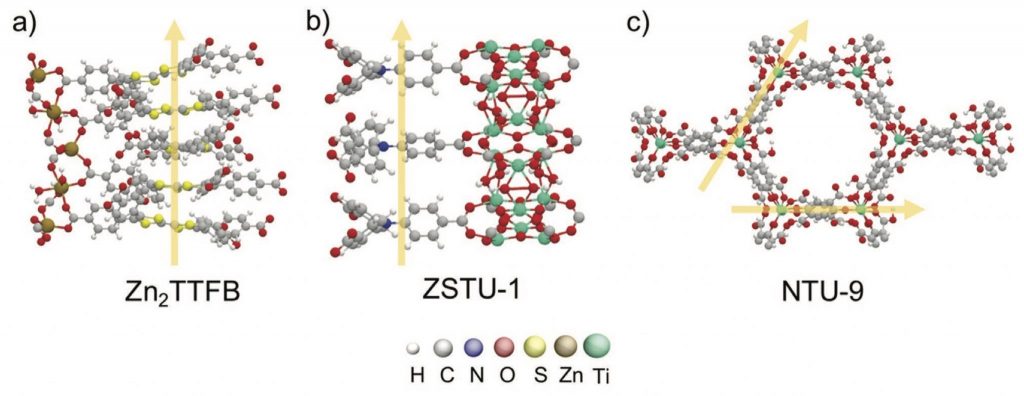M. Fumanal, A. Ortega-Guerrero, K. M. Jablonka, B. Smit, and I. Tavernelli, Charge Separation and Charge Carrier Mobility in Photocatalytic Metal-Organic Frameworks Adv. Funct. Mater. (2020) http://dx.doi.org/10.1002/adfm.202003792

Abstract Metal‐organic frameworks (MOFs) are highly versatile materials owing to their vast structural and chemical tunability. These hybrid inorganic–organic crystalline materials offer an ideal platform to incorporate light‐harvesting and catalytic centers and thus, exhibit a great potential to be exploited in solar‐driven photocatalytic processes such as H2 production and CO2 reduction. To be photocatalytically active, UV–visible optical absorption and appropriate band alignment with respect to the target redox potential is required. Despite fulfilling these criteria, the photocatalytic performance of MOFs is still limited by their ability to produce long‐lived electron–hole pairs and long‐range charge transport. Here, a computational strategy is presented to address these two descriptors in MOFs and to translate them into charge transfer numbers and effective mass values. The approach is applied to 15 MOFs from the literature that encompass the main strategies used in the design of efficient photocatalysts including different metals, ligands, and topologies. The results capture the main characteristics previously reported for these MOFs and enable to identify promising candidates. In the quest of novel photocatalytic systems, high‐throughput screening based on charge separation and charge mobility features are envisioned to be applied in large databases of both experimentally and in silico generated MOFs.